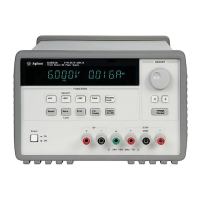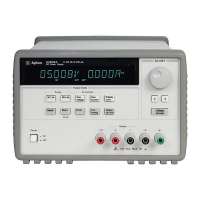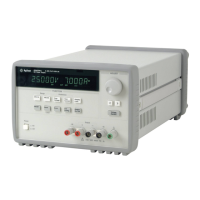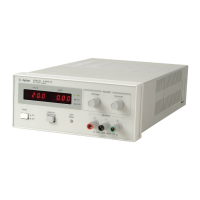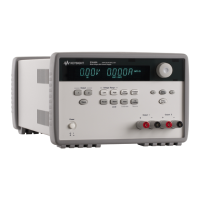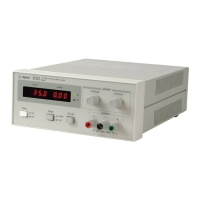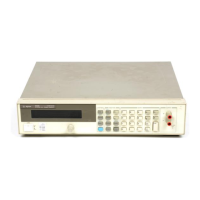Chapter 3 Calibration Procedures
Constant Voltage (CV) Verifications
51
3
Constant Voltage (CV) Verifications
Constant Voltage Test Setup
If more than one m eter or if a meter and an oscilloscop e are used, connect
each to the (+) and (-) terminals by a separate pair of leads to avoid mutual
coupling effects. Use coaxial cable or shielded 2-wire cable to avoid noise pick-
up on the test leads.
Voltage Programming and Readback Accuracy
This test verifies that the voltage programming and GPIB or RS-232 readback
functions are within specifications. Note that the readback values over the
remote interface should be identical to those displ ayed on the front panel.
You s houl d p ro gra m t h e powe r su p p ly o v er t he re mo te i nt e rfac e f o r t hi s te st
to avoid round off errors.
1
Turn off the power supply and connect a digital voltmeter between t he (+) and
(-) terminals of the output to be tested as shown in Figure 3-1.
2
Turn on the power supply. Select the 20V/10A* or 50V/4A** range and enable
the output by sending the commands:
VOLT:RANG P20V (E3633A)
VOLT:RANG P50V (E3634A)
OUTP ON
3
Program the output voltage to zero volt and current to full rated val ue
(10.0 A)* or (4.0 A)** by sending the commands:
VOLT 0
CURR 10 (E3633A)
CURR 4 (E3634A)
4
Record the output voltage reading on the digital voltmeter (DVM). The reading
should be wit hin the limit of (0 V ± 1 0 mV). Also, note that t he
CV
,
Adrs
,
Limit
,
and
Rmt
annunciators are on.
5
Readback the output voltage over the remote interface by sending the
command:
MEAS:VOLT?
6
Record the value displayed on the controller. This value should be within the
limit of (DVM ±5 mV).
*For Agilent E3633A Model **For Agilent E3634A Model
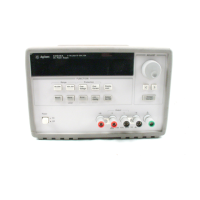
